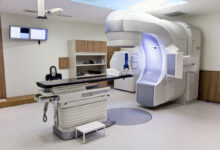Oncological Surgery

Oncological surgery has an important role in the diagnosis and treatment of cancer. With oncological surgery, cancerous organs and tissues are removed from the person’s body. Sometimes only reduction of tumour size can be the target of this surgical operation. It can also be aimed to eliminate symptoms such as pain and bleeding related to cancer. In this way, surgeries performed to reduce the symptoms of cancer and the side effects of treatment are called palliative surgery. In order to apply oncological surgery to the patient, the following issues are evaluated;
- Tumour Type,
- Tumour Grade,
- Tumour Stage,
- Patient’s Age,
- The Size of The Tumour,
- General Condition of The Patient
In order to perform oncological surgery, all health indicators of the patient must be examined. The presence of metastasis is very important for the oncological surgery to be performed. After the examination, robotic, open and laparoscopic surgical methods suitable for the patient are performed.
Which Patients Does Oncological Surgery Treat?
Diseases treated by oncological surgery are given as follows;
- Small Bowel Cancer
- Breast Cancer,
- Mouth Cancer
- Sinus Cancer
- Skin Cancer
- Bladder Cancer
- Ovarian Cancer
- Types Of Cancer Found İn Muscle Tissues
- Throat Cancer
- Vaginal Cancer
- Colon Cancer
- Cervical Cancer
- Brain Tumours
- Penile Cancer
- Kidney Cancer
- Tumour Cancer İn The Spinal Cord
- Testicular Cancer
- Tongue Cancer
- Tumour İn The Trachea
- Urinary Tract Cancer
- Oesophageal Cancer
Oncological surgery; It is used in cancers listed above and similar diseases. However, in cancer types such as leukaemia and lymphoma, oncological surgery is definitely not applied. In order for oncological surgery to be applied to the patient, the borders of the tumour tissue must be drawn. If the tumour boundaries cannot be determined and the surgery will put the patient’s health at risk, then this treatment method is definitely not applied to the patient. If tumour removal is deemed appropriate by the doctor with the appropriate surgical method, then oncology surgery is applied.
The surgeon who will perform oncological surgery must have a certain knowledge and experience, and it differs from other surgeries.
Surgical Oncology Department Treatment Methods
The surgical oncology department aims to improve cancer patients with treatment methods. The surgical oncology doctor considers several points before operating the cancer patient. First of all, the general health status of the patient is examined. Then, it is checked whether the patient is suitable for anaesthesia. The chronic disease and age of the patient are also very important in surgical oncology. The genetic predisposition of the patient to cancer, the habits of his daily life and the drugs used are also examined. The body of the patient, that is, whether he can renew himself after surgery, is also examined. Also, weight is very important factor too.
In order for oncological surgery to be performed, the patient must be of a certain weight. In the surgical oncology department; The cancerous tissues of the patient are surgically removed from his body. Only when the entire cancerous cell tissue is removed, the patient’s life is endangered. For this reason, the doctors of the surgical oncology department only work to reduce the tumour diameter. Thus, the disease is brought under control. This method is widely used in controlling the spread of cancer. The patient’s constant pain is also reduced. We can explain the subject of what does surgical oncology look at as follows:
Biopsy
If there is a mass in a patient with suspected cancer, a sample is taken from it. The sample taken from the patient is examined and it is determined whether it is good or bad.
Debulking Surgery Applications
Debulking method is also widely used in oncology surgical applications. In debulking surgical applications, not all cancerous tissues are removed, only the cancer mass that causes the finding that bothers the patient is removed. With debulking surgery, it is aimed to improve the general health status of the patient.
Prophylactic Surgery Applications
When the physician detects that the cancerous cells of the patient are multiplying uncontrollably, he starts to apply this treatment method. Prophylactic surgical practice; cancerous cell tissues are removed from the patient’s body. We can say that prophylactic surgery is very important in breast cancer, skin cancer and colon cancer.
Types of Palliative Surgery
Palliative surgeries are also performed with oncological surgery. Types of palliative surgery; It is not applied directly in cancer disease, but in situations that reduce the patient’s quality of life.
Oncological surgeons can perform palliative surgery to reduce the size of the tumour, to increase the effectiveness of radiotherapy and chemotherapy to be applied later, to open the blockage, if any, or to prevent bleeding or pain. It should be noted that palliative surgeries have no permanent effect.
Curative Surgery Applications
Curative surgical applications are widely used in oncological surgery. We can say that it is an application aimed at curing cancer disease directly. When it comes to curative surgical applications, it is important that the tumour is easily stripped from the surrounding tissues and that there is no widespread disease. It is aimed to remove all cancerous cells in the patient.
General Information About Oncological Surgery
When we talk about general information about oncological surgery, we can say that the first thing that comes to our mind is its use in the treatment of cancer patients. Oncology surgery department doctors aim to diagnose cancer early in the patient and start treatment. Oncology surgeons try to bring the patient back to life by applying up-to-date treatment methods.
The purpose of oncological surgery; to heal and/or comfort the patient. In the early stage of the disease, these operations are performed in order to avoid microscopic and macroscopic tumour tissues. Oncological surgery is also used in the sense of cancer surgery. In this section, especially multidisciplinary work gains importance. Before deciding on surgery, after determining the extent of the disease using modern imaging methods, oncological surgery is applied to the patient.





